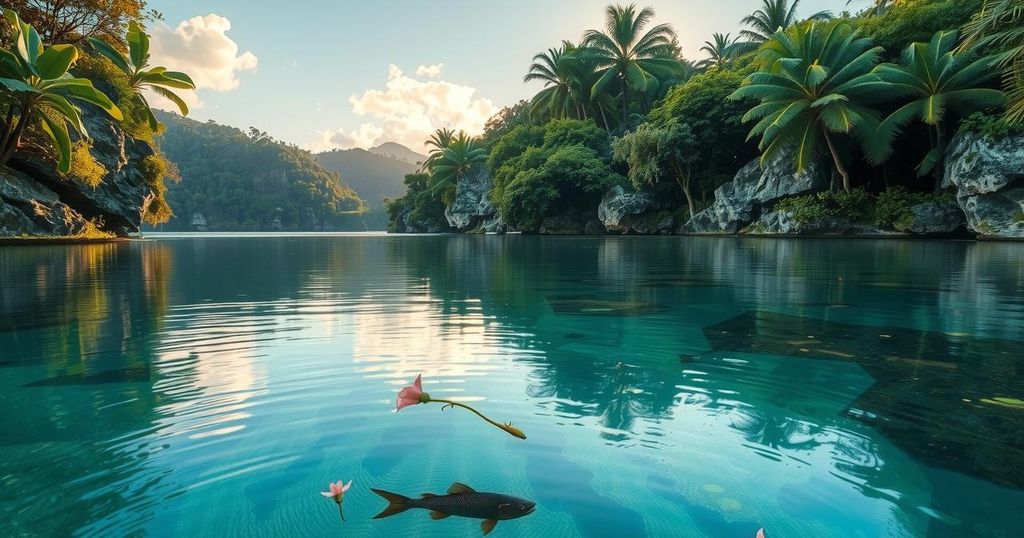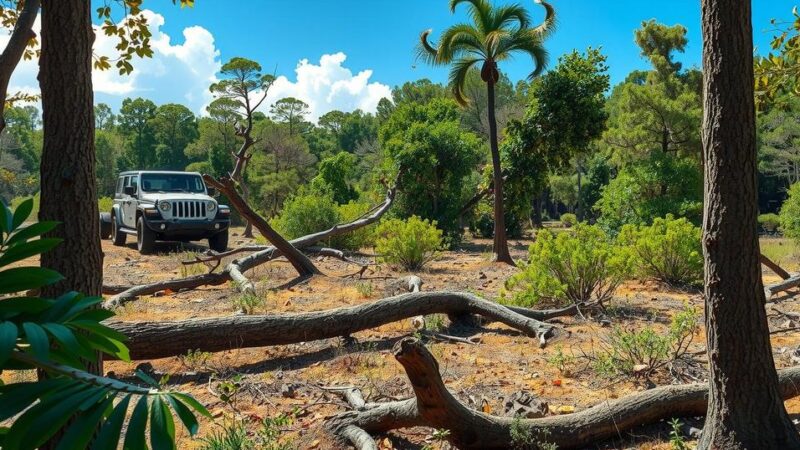A recent IUCN report revealed that 43% of Madagascar’s freshwater species are threatened with extinction, impacting local livelihoods that depend on these species for water and resources. Major risks include habitat loss and overfishing. The report emphasizes the need for further research and conservation efforts to protect these unique ecosystems.
According to a recent IUCN-led study, forty-three percent of Madagascar’s freshwater species face potential extinction, significantly impacting local communities. The comprehensive report titled ‘The Status and Distribution of Freshwater Biodiversity in Madagascar and the Indian Ocean Islands Hotspot’ evaluated the extinction risks of 653 species, including fish, molluscs, and aquatic plants, revealing that these species are threatened at a rate approximately twice that of Africa generally.
Freshwater species in Madagascar are vital, providing clean water and supporting local fisheries. Major threats to these species include habitat degradation, overfishing, and unsustainable agricultural practices, such as slash-and-burn methods. Laura Máiz-Tomé, a co-author of the report, expressed grave concern over these threats, emphasizing the reliance of the Malagasy people on freshwater resources for their livelihoods.
Madagascar boasts extensive wetlands featuring over 300 kilometers of rivers and streams, along with 2,000 square kilometers of lakes that support a vibrant array of aquatic life. Many species, such as the endemic Madagapotamon humberti crab and the Madagasikara river snail, are unique to the island. However, habitat destruction has led to significant declines, with over 80% of littoral forests lost due to deforestation.
The study highlights that many freshwater plants endemic to Madagascar are increasingly vulnerable. Sylvie Andriambololonera, Coordinator of the Missouri Botanical Garden’s Madagascar Research Unit, noted that numerous species had not been recorded over the past 50 years, underscoring the urgent need for continuous research and field assessments to fill knowledge gaps and facilitate conservation.
Furthermore, the report identified 23 Key Biodiversity Areas in Madagascar that are critical for freshwater biodiversity but are considerably underrepresented in protected regions. William Darwall, Head of IUCN’s Freshwater Biodiversity Unit, stressed the need for more extensive research to aid conservation efforts in what is considered a hotspot for global biodiversity.
The study received funding from The Critical Ecosystem Partnership Fund (CEPF) and was supported by Madagascar’s Ministry for Environment. Efforts to promote conservation measures will involve collaboration with NGOs, private sectors, and governmental bodies, with selected representatives facilitating the dissemination of findings and advocating for vital conservation initiatives.
The IUCN report underscores a critical situation regarding Madagascar’s freshwater biodiversity, with a significant percentage of species threatened with extinction. The findings highlight urgent environmental challenges, such as habitat destruction and overdependence on these resources by the local population, necessitating immediate conservation efforts and comprehensive research. By fostering collaboration among various sectors, there is potential to safeguard Madagascar’s unique aquatic ecosystems for future generations.
Original Source: iucn.org






